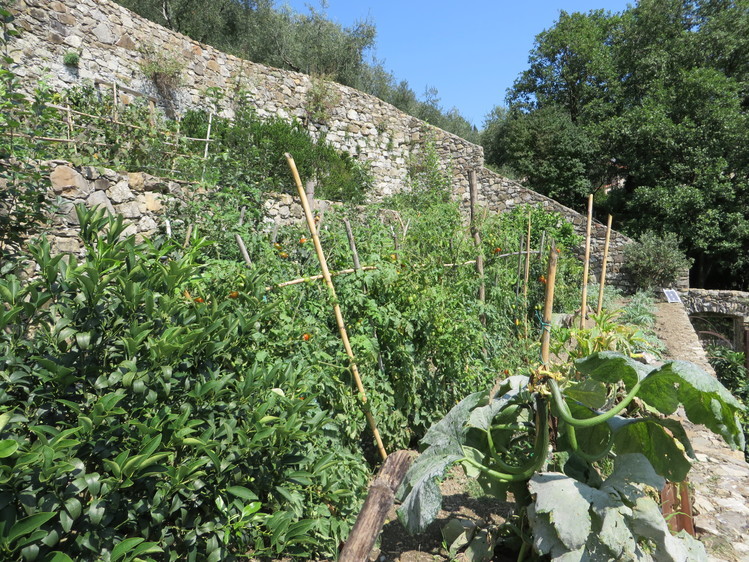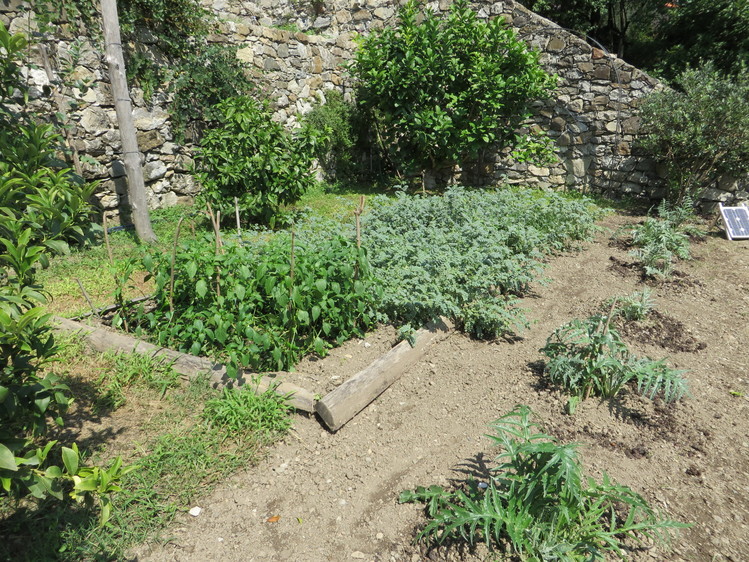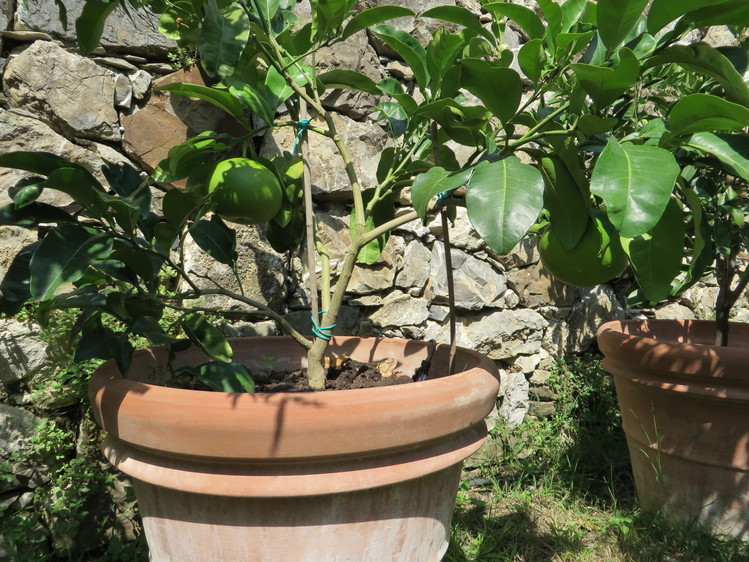Gignola's walled-up Vegetable Garden
A XVIII century building complex built on terraces around a perpetually active spring in an area of 600 square meters. There are 3 plantation plains and a particular path for the water from the spring, always running, which is transferred into a large central tank and from there, the unused part of it is canalized into the underlying stream.
This significant artifact, with other examples in the area, is located in the agricultural landscape of the valley beneath Fosdinovo, after restoration, is again visible for a long distance from the road which connects Fosdinovo to Sarzana.
The current owners of the farm have found the walled-up Garden Gignola completely abandoned. The renovation of the building structure, which was in a heavy decline conditions, was implemented simultaneously to the historical-environmental research in order to restore the original architectural value to the site, to come up defining a project aimed to requalify and reutilization of the space within the structure.
The recent renovation has received partial funding from the Lunigiana Mountain Community (regional law 29.04.98 /N°23/3.2 Preservation of natural areas and the rural environment). The entire historical-environmental research and the project are available in a CD.
Historical research shows that the initiative of the construction of this production system is to be attributed to Brizzi family of Fosdinovo from the mid '700: cultural destinations, given the material characteristics of the building, must be sought in the cultivation of delicate plants which require heat and water, and are profitable enough to justify a large capital investment.
The comparison with similar artifacts leads to move towards the cultivation of citrus fruits; culture to be understood not as exclusive, but mixed with other crops such as vegetables and fruit trees.
Following these historical information, the Garden has been gradually planted as an edible garden over the years.
Next to the preexistences such as a persimmon and a sour cherry tree of ancient varieties which can be seen also in the still lifes of Bimbi, today you’ll find:
- different varieties of citrus fruits like lemons (Meyer / Carrubaro / Red / Fiorentino), bitter oranges (melangolo / corniculata), sweet orange (Navel / Tarot / Sweet blood), tangerines (Clementino / Ciaculli), yellow and pink grapefruits, Kumquat, Citrus myrtifolia, Lime, maxima Cedar , Lumia of Sarzana, Pomelo;
- mulberries, pomegranates, arbutus, juniper, myrtle, fejoe, amalenchier, apple espalier;
- Small fruits like strawberries, blueberries, raspberries, blackberries without thorns, winter cherries;
- herbs, capers, rhubarbs, artichokes and other vegetables range.
There’ve been added later:
- an arbor with chairs and a stone table where during the summer is a shady spot right in front of the backdrop of the walls and during the winter serves as a convenient greenhouse for potted citrus trees;
- a watertight drainer, partially above the ground, with ozone purification and Jacuzzi for some refreshing bath during the summer.
























